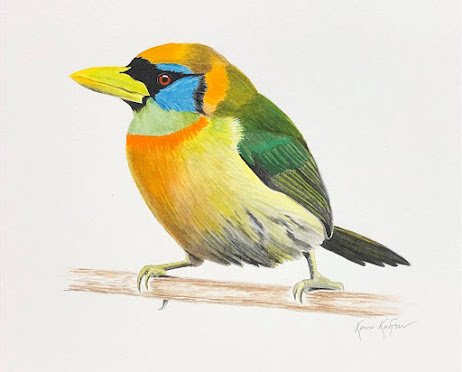Peru Trip with Wildside Nature Tours, Day 5: Nature - Large and Small
Kimberly Writes: If I keep saying "this was one of my favorite days of the trip," I'm afraid I'm going to lose my credibility. But the truth is, every day of this trip had something special to offer. Day five was no exception, offering a study in nature large and small!
From giant moths and lily pads to tiny monkeys and birds, I have to say it...this one one of my favorite days of the trip! (Don't judge!) :-)
From giant moths and lily pads to tiny monkeys and birds, I have to say it...this one one of my favorite days of the trip! (Don't judge!) :-)
Large...
The lights on the Queen Violeta attracted some spectacular moths,
including this large and impressive individual. (See it on my
hand in the next photo for an indication of its size.)
See, I told you, it was a biggin!
I haven't been able to pin an exact name on this bug (if you think the diversity of birds in Peru is impressive, you can't even imagine the lepidoptera!) but it looks like a silk moth of the genus Arsenura, and at least similar to Arsenura albopicta.
Small...
Our skiff stopped for a few minutes and we took the opportunity to search the vegetation. We were delighted to find several Painted Grasshoppers!
Large...
Seeing macaws in the wild always feels like a special blessing, so when a small group of Blue-and-yellow Macaws flew overhead we were delighted. But it really got the heart pumping when this one decided to pause for a few minutes!
Even at a distance, this is an impressive bird!
Tiny...
Tiny...
Our adventures took us from the giant macaw to this tiny girl:
a Glittering-throated Emerald! Isn't she lovely?! We thought we'd had quite a moment with this bird as she sat in full view for several seconds. But when she flew off,
she had a special surprise in store for us!
She had a nest!
Tucked beneath the elegant, protective arch of a Cecropia leaf,
this glittering gem of a bird and her magical little nest were like something
out of a fairy tale! And those who know me well won't be surprised to hear
that the grace of the moment brought tears to my eyes.
Hummingbird nests are like little dabs of magic. Built entirely by the female,
they begin with mouthfuls of silk gathered from spider webs. Next come puffs of plant down woven together with more spider silk. And when it's all round and cozy, its camouflaged with flakes of lichen. Pure magic!
Large...
The Boat-billed Flycatcher is aptly named.
Just look at the schnoz on this bird! The only member of the monotypic genus Megarynchus, it breeds in open woodland with some tall trees from Mexico south to Bolivia and Argentina, and through to Trinidad. Boat-billed Flycatchers are one of the largest species of tyrant flycatcher.
Small...
From a bill called a boat to a bill so tiny that it seems like an after-thought!
Sand-colored Nighthawks dare to be different! While most species in the family
are nocturnal and solitary, Sand-colored Nighthawks are partially diurnal,
sometimes seen feeding on aerial insects in late afternoon. They're also gregarious, frequently found in flocks of hundreds. If you're having trouble imagining a flock of hundreds, check out the next photo!
This is just a few branches of a large tree chock full of Sand-colored Nighthawks!
I think the people in our boat exhausted every expression of
amazement at the sight of all these birds festooning every branch!
Large...
We were delighted to find a Red Howler Monkey feeding low along the edge of the tributary we were exploring! Listen to the remarkable voice of this impressive beast!
Can you imagine being an unsuspecting explorer walking through the jungle
when THAT sound starts?
Small...
Pygmy Marmoset!
The word marmoset comes from the French word “marmouset,”
The word marmoset comes from the French word “marmouset,”
meaning shrimp or dwarf. Pygmy Marmoset is the smallest monkey but
not the smallest primate—that title goes to the Mouse Lemur.
At just 4.5 - 6 inches long (not including the tail) and weighing,
on average, about 3.5 oz., this is one of the world's smallest
primates, and is the smallest true monkey.
A full-grown Pygmy Marmoset could fit in an adult human's hand,
and it weighs about as much as a stick of butter! (Can you say SquEEEEEE!)
















Comments
Post a Comment